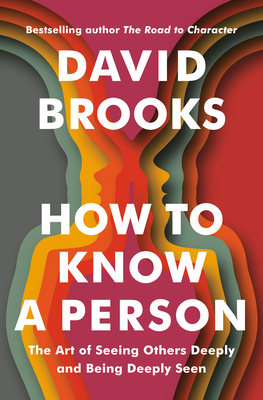
The Art of Connection: Exploring David Brooks’ How to Know a Person
In an era where digital interactions often overshadow genuine human connections, the ability to truly understand and empathize with others is more vital than ever. David Brooks’ How to Know a Person: The Art of Seeing Others Deeply and Being Deeply Seen serves as a heartfelt guide to cultivating meaningful relationships. Drawing from various disciplines—psychology, philosophy, and personal anecdotes—Brooks provides readers with the tools to foster deeper connections, combat feelings of isolation, and enhance their emotional intelligence. This blog post will explore the book’s key themes, notable insights, and practical applications, offering a roadmap for enriching our interpersonal relationships.
Summary of How to Know a Person
How to Know a Person is structured around the premise that the ability to see others deeply is essential for building healthy relationships, whether at home, work, or within the community. Brooks argues that many people feel invisible or misunderstood, and he sets out to help readers improve their capacity for genuine connection.
The Core Message
At the heart of the book is the idea that understanding another person is a profound act of creativity and empathy. Brooks emphasizes that by engaging deeply with others, we not only help them feel seen and valued but also enrich our own lives. The book is divided into three main parts, each focusing on different aspects of knowing and connecting with others:
- I See You: Understanding the fundamentals of connection.
- I See You in Your Struggles: Supporting others through difficult times.
- I See You with Your Strengths: Helping others recognize and celebrate their potential.
Main Concepts and Insights
1. The Skill of Seeing Others
Brooks introduces the concept of “Illuminators,” individuals who possess a persistent curiosity about others and excel at understanding them. He argues that this skill can be cultivated, allowing anyone to become an Illuminator in their relationships.
Key Takeaway: Cultivate Curiosity
To truly know someone, Brooks suggests that we must approach them with genuine curiosity. This involves asking thoughtful questions, listening actively, and being present in conversations. By doing so, we can uncover the layers of a person’s story and foster a deeper connection.
2. The Importance of Empathy
Empathy is a central theme throughout the book. Brooks emphasizes that to connect with others, we must be willing to understand their emotions and experiences, especially during times of struggle.
Key Takeaway: Engage in Active Listening
Brooks advocates for active listening as a way to practice empathy. By fully engaging in conversations and validating others’ feelings, we create a safe space for open dialogue and support.
3. Navigating Struggles Together
In the second part of the book, Brooks explores how to be present for others during their struggles. He discusses the importance of companionship and the role of vulnerability in deepening connections.
Key Takeaway: Share Vulnerability
Brooks encourages readers to share their own vulnerabilities as a way to foster trust and intimacy. When we are open about our struggles, it invites others to do the same, creating a reciprocal relationship built on understanding.
4. Celebrating Strengths
The final section of the book focuses on recognizing and celebrating the strengths of others. Brooks argues that helping individuals see their potential is a powerful way to uplift them and enhance their self-worth.
Key Takeaway: Offer Affirmation
Brooks emphasizes the importance of offering genuine affirmation and encouragement to others. By acknowledging their strengths and contributions, we help them build confidence and foster a sense of belonging.
Notable Examples and Case Studies
Throughout How to Know a Person, Brooks includes various anecdotes and examples that illustrate his points, making the concepts relatable and actionable.
Personal Anecdotes
Brooks shares personal stories from his own life, detailing his struggles with social interactions and how he learned to cultivate deeper connections. His candid reflections provide a relatable context for readers seeking to improve their interpersonal skills.
The Role of Community
The book also highlights stories of individuals and communities that exemplify the principles of connection. For instance, Brooks discusses how support networks can significantly impact personal growth and resilience during challenging times.
Historical Figures
Brooks references historical figures known for their deep understanding of others, such as E.M. Forster, who was celebrated for his ability to make people feel seen and valued. These examples serve to reinforce the idea that the art of connection has been valued throughout history.
Key Themes Explored
The Misunderstanding of Connection
A central theme in How to Know a Person is the common misunderstanding that connection is merely about surface-level interactions. Brooks argues that true connection requires effort, empathy, and a willingness to engage deeply with others.
The Power of Vulnerability
Brooks emphasizes that vulnerability is a strength, not a weakness. By being open about our struggles, we can create a more profound sense of connection and trust with others.
The Importance of Self-Reflection
The book encourages readers to engage in self-reflection to better understand their own emotions and motivations. This self-awareness is crucial for developing empathy and fostering meaningful connections.
The Role of Storytelling
Brooks highlights the power of storytelling in building connections. By sharing our narratives, we can create a shared understanding and foster empathy between individuals.
Practical Applications of How to Know a Person
Brooks’ insights offer practical applications for anyone seeking to enhance their interpersonal skills. Here are some key takeaways:
1. Practice Active Listening
Make a conscious effort to listen actively during conversations. Focus on understanding the other person’s perspective and validating their feelings.
2. Ask Thoughtful Questions
Cultivate curiosity by asking open-ended questions that encourage deeper conversations. This approach allows you to uncover the layers of a person’s story.
3. Share Your Vulnerabilities
Be open about your own struggles and experiences. Sharing vulnerabilities can create a safe space for others to do the same, fostering trust and intimacy.
4. Offer Genuine Affirmation
Recognize and celebrate the strengths of those around you. Offering genuine affirmation can boost their confidence and sense of belonging.
5. Engage in Self-Reflection
Take time to reflect on your own emotions and motivations. Understanding yourself better can enhance your ability to empathize with others.
Conclusion: A Call to Connection
How to Know a Person serves as a powerful reminder of the importance of genuine human connection in a fragmented world. David Brooks’ insights challenge us to cultivate empathy, embrace vulnerability, and actively engage with others to foster deeper relationships.
In a society increasingly characterized by isolation and misunderstanding, Brooks’ message is both timely and essential. He invites us to step beyond superficial interactions and invest in the art of truly knowing one another. As we strive to enhance our connections, let us remember that the quality of our relationships significantly impacts our overall well-being and happiness.
Ultimately, How to Know a Person is not just a guide to improving interpersonal skills; it is a celebration of the human spirit and the profound connections that enrich our lives. By embracing Brooks’ principles, we can embark on a transformative journey toward understanding ourselves and others more deeply, creating a more compassionate and connected world.
Read Full Novel
Read Related Novels
- How to Know a Person: The Art of Seeing Others Deeply and Being Deeply Seen by David Brooks | Goodreads
- Read The Almanack of Naval Ravikant by Eric Jorgenson Summary
- Read Think Like a Monk by Jay Shetty eBook Review
- Read Four Thousand Weeks by Oliver Burkeman Summary
- Read Supercommunicators by Charles Duhigg Summary
- Read Invisible Women by Caroline Criado Pérez Summary

